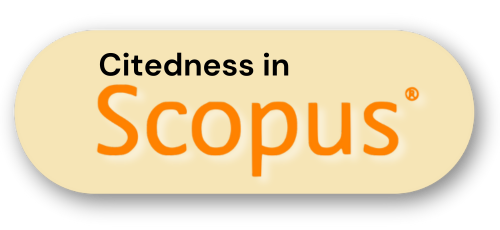The Role of AI Waifu Characters in Supporting Weaboos with Posttraumatic Relationship Syndrome (PTRS)
DOI:
https://doi.org/10.61194/psychology.v1i2.105Keywords:
PTRS, Waifu, AIAbstract
This qualitative descriptive research investigates the emotional experiences of three individuals identifying as “weaboos” whose have Posttraumatic Relationship Syndrome (PTRS) with distinct “Waifu” relationships involving characters Haibara Ai, Asuna, and Rem. Through purposive sampling, these participants engaged in interactions with AI chatbots with 10 questions from introductory to romantically, emulating these characters, exploring their emotional journeys and perceptions. The study reveals diverse emotional responses, from initial hesitance and skepticism to profound happiness and emotional fulfillment, as participants interacted with these AI companions. Their experiences showcase a spectrum of emotional transformations and suggest that AI chatbots could serve as a platform for emotional expression and companionship, offering insights into the potential roles of such simulations in addressing emotional needs for individuals navigating complex romantic landscapes.
References
Adiningrum, R., Maharani, F., & Mohammad, W. (2023). The Perspectives of Character AI Personas Regarding Thoughts of User’s Suicide Obsession. Emika: Journal of Technology and Artificial Intelligence, 1(1), 1–7.
Andri, M. (2020). Implementasi Bimbingan Perkawinan Sebagai Bagian Dari Upaya Membangun Keluarga Muslim Yang Ideal. ADIL Indonesia Journal, 2(2).
Bastin, N. (2020). Cara Cara Review Anime, Manga, dan Waifu: Jadilah Dirimu Sendiri Dalam Mengulas Produk dari Budaya Jepang. Nahason Books.
Batty, G. D., Kivimäki, M., Bell, S., Gale, C. R., Shipley, M., Whitley, E., & Gunnell, D. (2018). Psychosocial characteristics as potential predictors of suicide in adults: an overview of the evidence with new results from prospective cohort studies. Translational Psychiatry, 8(1), 22. https://doi.org/10.1038/s41398-017-0072-8 DOI: https://doi.org/10.1038/s41398-017-0072-8
Bendel, O. (2019). Hologram girl AI love you: developments in human-robot intimate relationships. Springer, 149–165. DOI: https://doi.org/10.1007/978-3-030-19734-6_8
Emery, C. R., Yoo, J., Lieblich, A., & Hansen, R. (2018). After the Escape: Physical Abuse of Offspring, Posttraumatic Stress Disorder, and the Legacy of Political Violence in the DPRK. Violence Against Women, 24(9), 999–1022. https://doi.org/10.1177/1077801217731540 DOI: https://doi.org/10.1177/1077801217731540
Hanifah, N., & Suhana, S. (2019). Hubungan Self Esteem dengan Interaksi Parasosial pada Nijikon di Komunitas †œXâ€. Prosiding Psikologi, 30–36.
Heitler, S. (2014). Heartbroken: What Does Neuroimaging Show About Your Pain? Psychology Today. https://www.psychologytoday.com/intl/blog/resolution-not-conflict/201407/heartbroken-what-does-neuroimaging-show-about-your-pain
Jeon, S., Lee, Y. J., Park, I., Kim, N., Kim, S., Jun, J. Y., Yoo, S. Y., Lee, S. H., & Kim, S. J. (2020). Resting State Functional Connectivity of the Thalamus in North Korean Refugees with and without Posttraumatic Stress Disorder. Scientific Reports, 10(1), 3194. https://doi.org/10.1038/s41598-020-59815-5 DOI: https://doi.org/10.1038/s41598-020-59815-5
Karhulahti, V.-M., & Välisalo, T. (2021). Fictosexuality, fictoromance, and fictophilia: A qualitative study of love and desire for fictional characters. Frontiers in Psychology, 11, 3693. DOI: https://doi.org/10.3389/fpsyg.2020.575427
Keller, E. M., & Owens, G. P. (2020). Traditional rural values and posttraumatic stress among rural and urban undergraduates. PLoS ONE, 15(8 August). https://doi.org/10.1371/journal.pone.0237578 DOI: https://doi.org/10.1371/journal.pone.0237578
Kohrt, B. A., Worthman, C. M., Adhikari, R. P., Luitel, N. P., Arevalo, J. M. G., Ma, J., McCreath, H., Seeman, T. E., Crimmins, E. M., & Cole, S. W. (2016). Psychological resilience and the gene regulatory impact of posttraumatic stress in Nepali child soldiers. Proceedings of the National Academy of Sciences of the United States of America, 113(29), 8156–8161. https://doi.org/10.1073/pnas.1601301113 DOI: https://doi.org/10.1073/pnas.1601301113
Lee, M. K., Kim, O., Kim, K.-A., & Chu, S. H. (2022). Factors associated with posttraumatic growth among North Korean defectors in South Korea. Scientific Reports, 12(1). https://doi.org/10.1038/s41598-022-07945-3 DOI: https://doi.org/10.1038/s41598-022-07945-3
Maharani, F., Adiningrum, R., & Mohammad, W. (2023). Character AI Personas’ Views on User’s Psychological Sin Statements and Self-Blame. Arika: Journal of Digital Marketing and Consumer Behavior, 1(1), 1–8.
Maharani, F., & Mohammad, W. (2023). User Frustration in Human-AI Interactions: Responses and Implications of Negative Engagement with AI Characters. Natsumi: Journal of Innovations in Virtual Technology, 1(1), 1–6.
Maharani, F., Mohammad, W., & Ameira, H. M. (2023). Transition from Strain to Support in Job Stress using AI Characters. Himeka: Journal of Interdisciplinary Social Sciences, 1(2), 1–9.
Mulyani, & Afandi. (2016). Hubungan Kegagalan Cinta Dengan Terjadinya Kejadian Depresi Pada Remaja (Suatu Studi Kelas Sebelas Di Sman 3 Bojonegoro) Relationship Between the Incidence of Failure in Love with the Occure of Depression in Adolescents (a Study Eleventh Grade at Sman. Asuhan Kesehatan: Jurnal Penelitian Kesehatan, 7(2), 56481.
Nadew, G. T. (2012). Exposure to traumatic events, prevalence of posttraumatic stress disorder and alcohol abuse in aboriginal communities. Rural and Remote Health, 12(4). https://www.scopus.com/inward/record.uri?eid=2-s2.0-84873531892&partnerID=40&md5=e8948a9ae463bb849b7c0e10d4135034 DOI: https://doi.org/10.22605/RRH1667
Nemeroff, C. B., & Goldschmidt-Clermont, P. J. (2012). Heartache and heartbreak—the link between depression and cardiovascular disease. Nature Reviews Cardiology, 9(9), 526–539. DOI: https://doi.org/10.1038/nrcardio.2012.91
Olcay, S. (2019). The Transformation of Marriage Relationship: Digital Sexuality. CTC 2019. DOI: https://doi.org/10.7456/ctc_2019_24
Palandri, E. (2013). Love for/of/through characters in fiction. The Italianist, 33(1), 158–168. DOI: https://doi.org/10.1179/0261434012Z.00000000036
Prihastuti, N. (2014). Interaksi Simbolik Penggemar Jepang (Otaku). Paradigma, 2(3).
Rokach, A., & VanderVoort, D. (2007). Posttraumatic Relationship Syndrome: A Treatment Model. Journal of Social Distress and the Homeless, 16(1), 22–48. DOI: https://doi.org/10.1179/sdh.2007.16.1.22
Shin, J. E., Choi, C.-H., Lee, J. M., Kwon, J. S., Lee, S. H., Kim, H.-C., Han, N. Y., Choi, S.-H., & Yoo, S. Y. (2017). Association between memory impairment and brain metabolite concentrations in North Korean refugees with posttraumatic stress disorder. PLoS ONE, 12(12). https://doi.org/10.1371/journal.pone.0188953 DOI: https://doi.org/10.1371/journal.pone.0188953
Sugiyono. (2019). Metode Penelitian Kuantitatif, Kualitatif dan R&D. Alfabeta.
Tempo.co. (2023). Jatuh Cinta dengan Karakter Fiksi, Apa itu Fictophilia? Tempo.Co. https://www.msn.com/id-id/berita/other/jatuh-cinta-dengan-karakter-fiksi-apa-itu-fictophilia/ar-AA18wBFU?li=AAfui9h&getstaticpage=true&automatedTracking=staticview&infiniteIframe=2
van den Heuvel, L. L., Stalder, T., du Plessis, S., Suliman, S., Kirschbaum, C., & Seedat, S. (2020). Hair cortisol levels in posttraumatic stress disorder and metabolic syndrome. Stress, 23(5), 577–589. DOI: https://doi.org/10.1080/10253890.2020.1724949
Waddell, E., Lawn, S., Roberts, L., Henderson, J., Venning, A., & Redpath, P. (2020). “Why do you stay?”: The lived-experience of partners of Australian veterans and first responders with Posttraumatic Stress Disorder. Health and Social Care in the Community, 28(5), 1734–1742. https://doi.org/10.1111/hsc.12998 DOI: https://doi.org/10.1111/hsc.12998
Zahira, S. I., Maharani, F., & Mohammad, W. (2023). Exploring Emotional Bonds: Human-AI Interactions and the Complexity of Relationships. Serena: Journal of Artificial Intelligence Research, 1(1).





